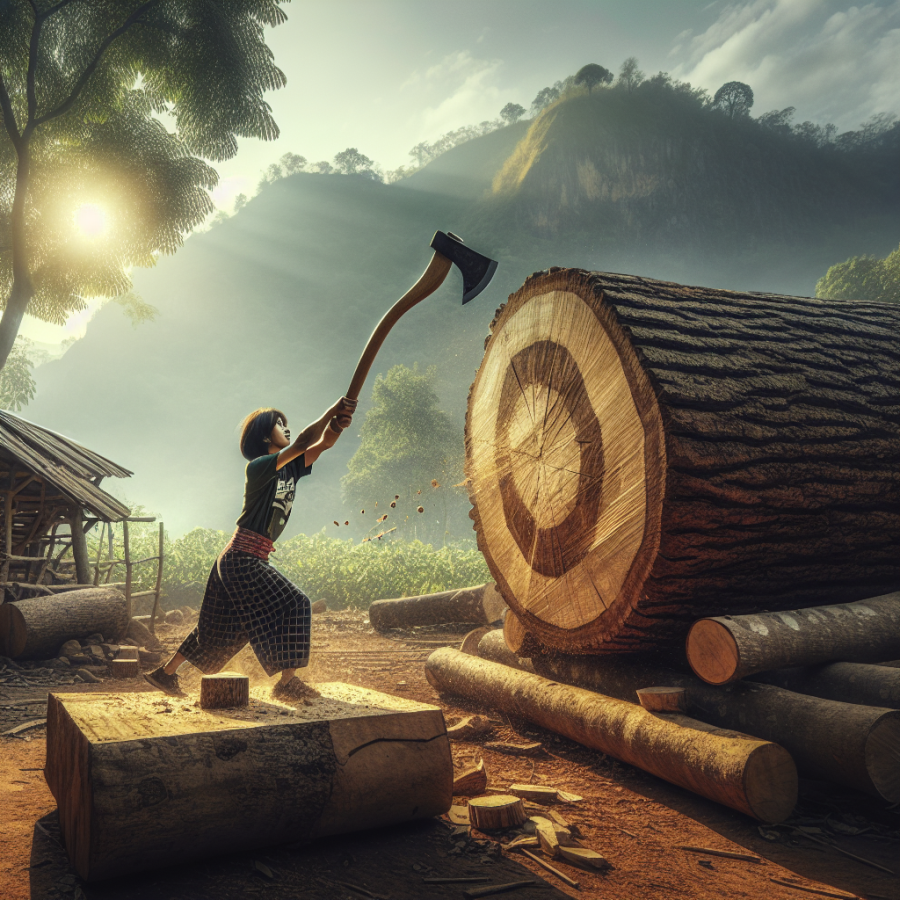Techniques and Traditions: The Cultural Significance of Aizkolaritza in Basque Heritage
Aizkolaritza, the traditional Basque sport of wood chopping, is not merely a display of physical strength and endurance; it is deeply embedded in the cultural fabric of the Basque people. This time-honored practice, which dates back several centuries, originated in rural areas as a way of preparing firewood for winter and clearing trees for agricultural land. However, over time, aizkolaritza has evolved far beyond its utilitarian roots to become a symbol of Basque identity and pride.
One of the key aspects of aizkolaritza is the blend of technique and tradition that competitors, known as aizkolaris, must master. Unlike conventional wood chopping, in aizkolaritza, the aizkolaris employ a distinctively Basque method, using an ax known as an aizkora, which has a wider blade than those typically found in other wood chopping competitions. This technique requires exceptional precision and careful calculation to execute the necessary swinging motion and forceful strikes that slice through the hearty Basque timber.
The training of an aizkolari is a meticulous process that involves learning from older, experienced woodchoppers and often includes a deep understanding of wood grain, moisture content, and the unique characteristics of various tree species. This knowledge enables aizkolaris to anticipate how the wood will split and to strategically plan their cuts.
Aizkolaritza competitions are a vibrant expression of Basque custom, with the sound of axes hitting wood resonating at local festivals and gatherings. Here, spectators watch in fascination as aizkolaris, clad in traditional Basque attire—typically white shirts and trousers, accented with red scarves and sashes—compete not only against each other but also against the clock. The races often involve cutting through a set number of logs or achieving the fastest time to slice through a single, large trunk.
Furthermore, aizkolaritza serves as a living history lesson, offering insight into the daily lives of Basque ancestors. The sport instills a sense of camaraderie and mutual respect among competitors, echoing the communal spirit that would have been vital in past communities where cooperation was necessary for survival.
In emphasizing the significance of aizkolaritza, it's important to recognize its role in fostering and preserving the Basque language, Euskara.
Read also:
Navigating the Thrill: Expert Strategies for Boar Hunting Success
Exploring Aizkolaritza: The Intricacies of Basque Wood Chopping Competitions
Aizkolaritza, a traditional Basque wood chopping sport, holds a significant role in the cultural fabric of the Basque Country. This ancient art form is much more than a simple display of brute strength; it is a nuanced competition rich with history, technique, and community significance.
The sport's origins are rooted in the everyday tasks of Basque foresters and farmers. These individuals, referred to as 'aizkolaris', would chop wood for various purposes such as building materials and fuel. Over time, what was once a chore evolved into a competitive display of skill and endurance. The aizkolaris' ability to quickly and efficiently cut through logs became a source of pride and one of the benchmarks for competitive prowess.
The intricacies of Aizkolaritza are evident in the various techniques that competitors employ. Unlike the simple swinging of an axe seen in many wood chopping events, Aizkolaris must master several different axe strokes, each tailored for specific types of wood and cutting angles. For instance, the 'txapela' cut requires the competitor to slice the log from the top, while 'erloju' involves cutting around the circumference to bring the log down in segments.
Apart from the technical aspects, the axes used in Aizkolaritza are specially crafted tools, designed to maximize efficiency and minimize physical strain. The design and weight distribution of the axe heads are optimized for different woods and cutting techniques. The handle length and material are also personalized to suit the individual chopper’s style, ensuring a perfect balance between the aizkolari's physique and the tool.
Equally important is the physical conditioning of the aizkolari. These athletes undergo intensive training to strengthen their muscular endurance, precision, and coordination. Success in Aizkolaritza depends on the chopper's ability to sustain a rhythm while delivering powerful and accurate strikes without succumbing to fatigue.
The types of wood used in competitions are another layer of complexity. Each species of tree presents its own challenges, with variations in grain density and hardness. Seasoned Aizkolaris can identify the best approach to a log just by examining its texture, size, and even the sound it produces when struck.
Beyond the individual display of skill, Aizkolaritza is also a team sport.




